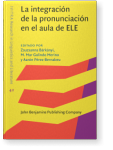Chapter 5
De la comprensión auditiva a la pronunciación
En este capítulo nos ocupamos tanto del papel de la enseñanza / aprendizaje de la pronunciación a
partir de la comprensión auditiva como de la percepción multimodal. Tras el esbozo de unas bases conceptuales sobre la
comprensión auditiva y el procesamiento del habla, presentamos brevemente los principales modelos teóricos y los cinco
principios de investigación basada en la evidencia que, en nuestra opinión, sustentan un buen diseño curricular de la
pronunciación. Finalizamos con una propuesta práctica, ejemplificada en los contrastes de las consonantes líquidas en
español, que parte de la percepción: actividades contextualizadas, rentables, significativas y lúdicas, en progresión
de lo simple a lo complejo, de lo general a lo particular, teniendo en cuenta el carácter multimodal del habla y su
dimensión corporeizada.
Article outline
- 1.Introducción
- 2.Contextualización de la relación entre la comprensión auditiva y la pronunciación
- 2.1De qué hablamos cuando hablamos de comprensión auditiva. El procesamiento del habla: Etapas y tareas
- 2.2Percepción y pronunciación. La lengua materna como filtro: La sordera fonológica
- 2.3La comprensión auditiva. La pronunciación y los niveles de análisis del lenguaje: Relaciones y diferencias
- 3.Contribuciones de la investigación actual a la relación entre comprensión auditiva y pronunciación
- 4.Buenas prácticas en la integración de la pronunciación
- 4.1Selección de materiales
- 4.2Progresión
- 4.3Multimodalidad: La comprensión auditiva también es visual
- 4.4Líquidas fluidas con Rosalía y Raw Alejandro
- 5.Conclusiones y líneas de investigación para el futuro
-
Nota
-
Referencias bibliográficas
This content is being prepared for publication; it may be subject to changes.
Article language: Spanish
